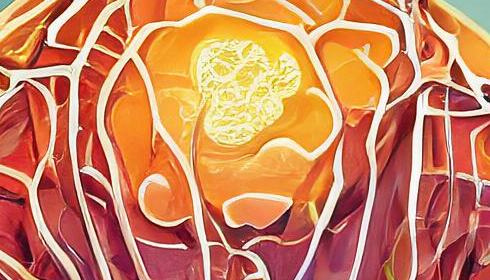
Study Unveils Role of TorsinA Protein in Neuron Development, Paving the Way for Potential DYT1 Dystonia Treatments
A recent study by UT Southwestern Medical Centre researchers shed light on the involvement of a protein known as torsinA in the early development of neurons, notably its influence on the positioning of nuclear pores in the membrane enclosing the nerve cells' nucleus. The publication of these findings in Nature Cell Biology marks a significant advancement in our understanding of torsinA's function, potentially leading to novel treatment approaches for DYT1 dystonia, a rare neurological condition resulting from a mutation in the torsinA gene.
"For years, the function of torsinA has been elusive," said Dr. Samuel Pappas, Assistant Professor at the Peter O'Donnell Jr. Brain Institute and study co-leader. "This study shows that torsinA is involved in the organisation of nuclear pore complexes in space. It also suggests that if this process isn't controlled properly during neurodevelopment, it could lead to long-lasting problems with neurones."
The study, co-led by Dr. William Dauer, Director of the O'Donnell Brain Institute, and Dr. Sami Barmada, Associate Professor of Neurology at the University of Michigan, identifies torsinA's critical involvement in nuclear pore complex (NPC) distribution, which is essential for healthy neuronal function.
DYT1 dystonia is a hereditary disorder characterised by abnormal twisting and tremors that typically develop in childhood. Although the torsinA mutation that causes this illness is relatively widespread, affecting an estimated 54,000 to 80,000 persons in the United States, doctors are baffled as to why symptoms show in only a percentage of carriers. Dr. Pappas stressed that understanding the function of torsinA is critical for solving these puzzles.
NPCs are protein clusters that generate pores in the nuclear membrane, allowing critical components to pass between the nucleus and the cytoplasm of the cell. In earlier research, Dr. Pappas and his colleagues found that when the torsinA gene was taken out during early development in animal models, the NPCs in the neurones were grouped together instead of being spread out evenly over the nuclear envelope.
The current work aims to further investigate torsinA's significance by tracking NPC distribution in neurones separated from mice shortly after birth. Within days, the researchers saw a rise in NPC creation, which coincided with neural circuit maturation. However, neurones lacking the torsinA gene showed aberrant NPC clustering, which mirrored previous findings.
The researchers created a unique mouse strain in which they labelled one of the NPC proteins with a fluorescent marker to investigate the significance of torsinA in living animals. This allowed them to see the development and distribution of NPCs in real time. Their findings revealed that neurones lacking functioning torsinA had clusters of freshly created NPCs scattered unevenly throughout the nuclear membrane.
Furthermore, the researchers discovered aberrant "blebs" in the nuclear envelope—swollen patches that formed in the same locations as the NPC clusters. This aberrant structure appeared before NPC maturation, implying that torsinA regulates NPC dispersion during early neuronal development.
Using modern techniques such as super-resolution microscopy, the study found that, despite their aberrant distribution, NPCs generated in torsinA-deficient neurons had normal structural conformations. This study shows that the protein's function is to determine the spatial organisation of NPCs within the nuclear envelope rather than to produce them.
The revelation that torsinA controls NPC distribution during a critical period of neuronal development has far-reaching implications for understanding and possibly treating DYT1 dystonia. As Dr. Dauer said, these findings are very important for finding a possible therapeutic target: "This new work identifies nuclear pore biogenesis as a torsinA-dependent process during that critical period, so it is exciting to set a mechanistic focus to overcome this defect."
More research could investigate why certain carriers of the torsinA mutation experience symptoms while others do not, potentially leading to the development of precision therapy methods. Scientists may be able to develop treatments for DYT1 dystonia by determining how torsinA malfunction leads to long-term neural impairments.
In conclusion, this study provides important insights into the molecular mechanisms underlying torsinA's role in neurodevelopment. As research improves, the possibility to transfer these insights into therapeutic applications may provide hope to those suffering from DYT1 dystonia.